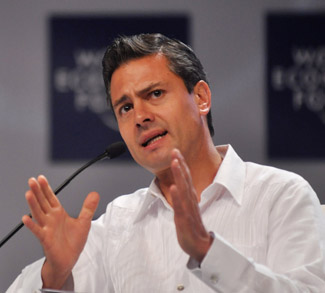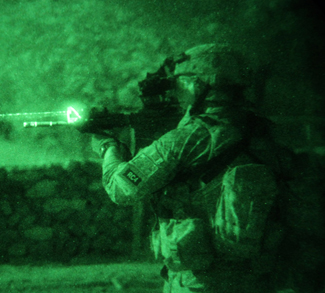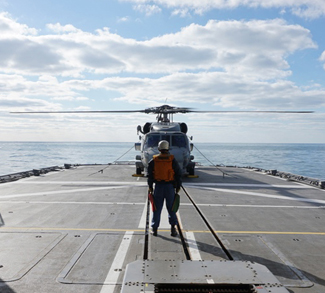Summary
A drug trafficking campaign is being conducted against Russia on a broad scale affecting all spheres of its political, social and economic life. Kyrgyzstan plays an important role in this campaign. There are ten main routes of heroin traffic from Afghanistan (occupied by the US forces) with six of them crossing the Kyrgyz city of Osh, an important hub of Afghan drug traffic.
Analysis
Here are these routes:
1. Badakhshan (Afghanistan) – Gorno-Badakhshan (Tajikistan) – Osh (Kyrgyzstan) – Sumgait (Azerbaijan) (earlier the processing of morphine into heroin was carried out at a facility near the Azeri capital of Baku but with the development of drug production in Afghanistan the Azeri drug mafia switched to drug transit) – Bosnia – Croatia – Western Europe;
2. Badakhshan – Gorno-Badakhshan – Osh, – Bishkek (Kyrgyzstan) – Samara (Russia) – Moscow (Russia) – Estonia – Sweden – the US;
3. Badakhshan – Gorno-Badakhshan – Osh, – Bishkek – Yekaterinburg (Russia) – Moscow – Estonia – Sweden – the US;
4. Badakhshan – Gorno-Badakhshan – Osh, – Bishkek – Nizhni Novgorod (Russia) – Moscow – Estonia – Sweden – the US;
5. Badakhshan – Gorno-Badakhshan – Osh, – Bishkek – Saransk (Russia) – Moscow – Estonia – Sweden – the US;
6. Badakhshan – Dushanbe – Bombory (Georgia) – Kobuleti, Ajaria (Georgia) (earlier the processing of morphine into heroin was carried out here but with the development of drug production in Afghanistan, Kobuleti was also turned into a transit center) – Turkey;
7. Murghab (Tajikistan) – Gorno-Badakshan, – Osh – Bishkek – Ganja, Azerbaijan – Moscow – Šiauliai (Lithuania),– Europe;
8. Mazar-i-Sharif (Afghanistan) – Termez (Uzbekistan) – Shali, (Chechen republic) – Nakhchivan (Azerbaijan) – Turkey;
9. Mazar-i-Sharif– Termez – Samarkand (Uzbekistan) – Ganja – Dagestan – Shali – Moscow – Šiauliai;
10. Mazar-i-Sharif– Termez – Samarkand – Ganja – Dagestan – Shali – the Republic of Karachay-Cherkessia (Russia) – Abkhazia – Romania.
As we can see – the main routes of heroin traffic to Russia, Europe and the US are those that cross or originate in Tajikistan and/or Southern Kyrgyzstan.
These routes (from Tajikistan to Southern Kyrgyzstan) cover three main motor roads: Khujand – Osh, Khorog – Osh and Dzergital – Osh.– along these roads the Afghan heroin is transported further to Kazakhstan and Russia: For example, “Sogdian direction” covers motor roads from the Tajik Khujand to the Batken region of Kyrgyzstan and farther to Osh. Another direction, the “Batken direction”, covers mountain paths from Dzhergitalsky district of Tajikistan to the Batken region. Part of these routes passes through the territory of Uzbekistan. And practically all routes lead to the Osh region of Kyrgyzstan and from there drugs are shipped via the Jalal-Abad region to the North of Kyrgyzstan – to the Talas and Chui regions, and from there to Kazakhstan, Russia and Europe.
Besides, in summer drugs are shipped from Tajikistan to southern Kyrgyzstan down hundreds of hiking and horse paths in the mountains which are practically impossible to control.
As we can see, the Gorno-Badakhshan (Tajikistan) – Osh (Kyrgyzstan) section is the one that’s most frequently used in most routes.
Since 2008 the number of Kyrgyz citizens, detained on Russian territory for illegal sales of drugs has increased. In early 2009 alone, almost five tons of drugs were confiscated, including 480 kg of heroin and 2680 kg of hashish. The detainees were mainly Kyrgyz citizens and ethnic Kazakhs who carried Russian passports. According to the Deputy Director of the Agency for Drug Control of Kyrgyzstan Vitali Orozaliev, drug traffic via Kyrgyzstan is constantly growing and in 2009 it doubled on the previous year.
“Drug dealers have huge financial resources, – Orzaliev says, – and they receive detailed information from corrupt law enforcement agency officials about forthcoming operations against them”. The average salary of an anti-narcotic agency officer in Kyrgyzstan is $150, and if drug dealers offer them $50,000-100,000 for his cooperation, this deal will be hard to refuse”, Orzoliyev stresses. He adds that drug trafficking is a very profitable business. If in Afghanistan a kilo of heroin is available at $1,200-1,300, in Kyrgyzstan the price rises to $4,000-5,000 per kg, while in Russia it shoots up to $45,000 per kg.
“We are witnessing a merger of the drug business with law enforcement agencies”, – Erik Iriskulbekov, an expert with Kyrgyzstan’s NGO Adilet, says. Even if a criminal is caught in the act, they will not necessarily be brought to responsibility. Very often judges or medical experts rule such offenders to be mentally ill, so the latter escape punishment.
On April 1, 2010, during a special operation in the city of Osh to detain a drug suspect, the agents of the Kyrgyz Interior Ministry confiscated more than 160 packages of Afghan hashish (about 107, 8 kg) and 24.4 kg of heroin. That was a serious blow to the drug mafia, so a few days later, on the night of April 6th, the country saw a people’s uprising, and a coup. A government of national confidence seized power as a result, pledging Washington to retain the US military base Manas in Kyrgyzstan.
Kyrgyzstan has long since been prominent on the geopolitical agenda of the United States and its allies.
According to the CIA, Kyrgyzstan is a small, poor country in the mountains with an emphasis on agriculture. Cotton, wool, meat are the main agricultural products and exports. But the country also has hydropower resources, deposits of gold and rare-earth metals; local deposits of coal, oil and gas, mercury, lead, zinc, bismuth, nephelite. The CIA points out in a report the circulation of illegal drugs in Kyrgyzstan, local opium poppy and hashish production mainly for the consumption within the country and in the CIS countries. The report also mentions that the government has launched a minor-scale programme to root out the drug crops; the use of Kyrgyzstan as a drug traffic transfer point to ship drugs to Russia and Western Europe from South West Asia.
According to the Western media, people’s anger on the night of April 6th of 2010 was sparked off by an increase in gas and water tariffs, arrests of the opposition leaders, corruption and the clan system, and general authoritarianism. But no mention was ever made of the drug business!
However, connivance at this criminal business costs Russia a pretty penny.
The borderline between Russia and China near Kyrgyz territory was established more than 100 years ago. For a number of reasons (inaccuracy in the description of the border, difficult high-altitude conditions, inadequate study of the area, etc.) there are several controversial areas between China and Kyrgyzstan, whose territorial identity was not established before 1996, when Kyrgyzstan and China signed an agreement on their state border. Meanwhile the Kyrgyz-Uzbek and Kyrgyz-Kazakh borders remain open. With the rules of the Customs Union coming into force and the increase of the custom duties these stretches of the Kyrgyz border will prove excellent loopholes for the drug business to use. The Kyrgyz government discussed this problem at its meeting in February 2010.
Although Kazakhstan has been part of the Customs Union with Russia since January 1st 2010, its borders with other countries remain poorly protected. Many border checkpoints lack elementary power supply, and no more than 12 officers perform their duties at the checkpoints, where a 100-strong customs force should be present under the existing customs regulations.
If we look at the map, we will see how firmly Kazakhstan grasps Russia’s South. The Afghan drugs cross the Kyrgyz-Kazakh border practically without hindrance. The question is: what will happen after the creation of the Customs Union of Russia and Kazakhstan?
Moscow told Astana to boost the protection of Kazakhstan’s southern borders if Kazakhstan wanted to join the Customs Union with Russia. Kazakhstan promised Russia to make progress in guarding its border with Kyrgyzstan, and allocated huge funds to tighten border security. But are the measures taken by Astana and Bishkek to protect Russia from the aggressive drug traffic from the US-controlled Afghanistan effective enough? Our earlier negative experience gives us grounds to doubt it.
So far the borders in question have had gaps that are wide enough for tons, rather than grams, of drugs to be smuggled through. Cooperation of the drug lords of Kazakhstan, Kyrgyzstan and Russia has ensured smooth passage of tens of tons of drugs from one country to another. While customs officers at Russian airports confiscated grams of drugs, tons were being channelled into Russia by land routes. A number of checkpoints on the Russian-Kazakh and Russian-Kyrgyz borders lack the required inspection equipment. Custom officers are unable to check large TIR trucks carrying huge freight containers. The drivers claim that the containers are being transported from the Kyrgyz warehouse sealed, and nobody has the right to open them before they reach their destination in Russia.
Now, who may be interested in maintaining the current state of affairs?



